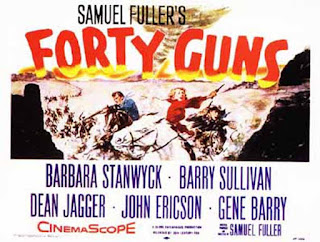Hester Grahame (Valerie Hobson) is a woman of ambition. She has a husband, three children, a lovely home, but she wants more. She wants expensive clothing and to mix in society, but that costs money. Her small income and her husband's earnings are not enough for her to live in the style she requires. Her young son, Paul (John Howard Davies) wants her to be happy and discovers that, by using his old rocking horse, he is able to hone in on the winners of some horse races. But there is a cost in using The Rocking Horse Winner (1949).
Based on short story by D.H. Lawrence (as well as a one-act play), The Rocking Horse Winner is often classed as a horror film. It is reminiscent of the short story The Monkey's Paw by W.W. Jacobs or of the film The Innocents (and the story on which it is based The Turn of the Screw by Henry James), with supernatural overtones that one is never quite sure are real. Does Paul really communicate through his rocking horse, or is it mere coincidence that he is able to pick horse race winners? It is his communication with the beyond that is seeping his life's energy from him, or is he just a sickly, over-imaginative child? We never will know.
As portrayed by Valerie Hobson, Hester is a careless person who overdoes everything. She overspends, she overreacts. She doesn't mean to be an uncaring mother, but her social activities are time-consuming. She has Nanny there to look after the youngsters, so Hester is not really aware of the changes going on in her young son. That she is much harsher and more selfish in the short story is probably one of the better changes made by the film. Were she that horrid, the movie would be completely unbearable. As it is, it is still a hard film to watch.
John Mills, who acted as producer for the film, has a small part. It's not an unimportant one, but he's only on screen for about 10 minutes total. Naturally, we wanted to see more of him, and it turns out the audience at the time of the film's release felt the same way. He later posited in his autobiography (Up in the Clouds, Gentlemen Please) that this was a factor in the film's poor box office returns: "I was deluged with mail from my fans, who said they didn't expect to pay good money only to see me on the screen for about ten minutes." (TCM article) Regardless, he is always an enjoyable actor to watch, and his characterization of Bassett, the Grahame's groom, is of the one totally honest and sensible occupant of the household.
This was John Howard Davies second film role - he had appeared the prior year in Oliver Twist
(in the title role). He's very good as Paul, giving him a pathos and a
frenzy that are appropriate to the role. He would appear in only two
more films; in 1967, he would switch to directing and producing. The
result - nominations for television BAFTA's for Monty Python's Flying Circus and Mr. Bean; and a win for Fawlty Towers. He died of cancer in 2011, at the age of 72.
While this is a very well-done and well-performed film, we found it painful to watch. If you are a horror fan, you might find it enjoyable; if you are interested in films that leave much to your imagination and provide much to consider, you will certainly enjoy it. In the end, we were glad we watched The Rocking Horse Winner, but felt we couldn't recommend it without a caveat that the film is distressing. We'll leave you with a scene from early in the film:As portrayed by Valerie Hobson, Hester is a careless person who overdoes everything. She overspends, she overreacts. She doesn't mean to be an uncaring mother, but her social activities are time-consuming. She has Nanny there to look after the youngsters, so Hester is not really aware of the changes going on in her young son. That she is much harsher and more selfish in the short story is probably one of the better changes made by the film. Were she that horrid, the movie would be completely unbearable. As it is, it is still a hard film to watch.
John Mills, who acted as producer for the film, has a small part. It's not an unimportant one, but he's only on screen for about 10 minutes total. Naturally, we wanted to see more of him, and it turns out the audience at the time of the film's release felt the same way. He later posited in his autobiography (Up in the Clouds, Gentlemen Please) that this was a factor in the film's poor box office returns: "I was deluged with mail from my fans, who said they didn't expect to pay good money only to see me on the screen for about ten minutes." (TCM article) Regardless, he is always an enjoyable actor to watch, and his characterization of Bassett, the Grahame's groom, is of the one totally honest and sensible occupant of the household.



















